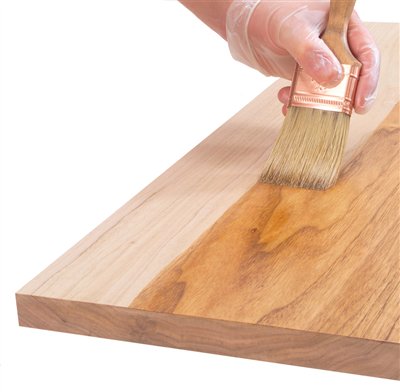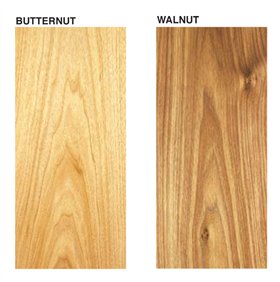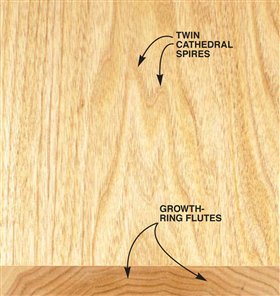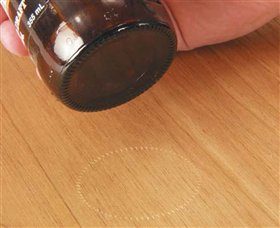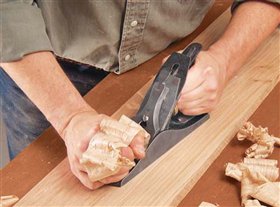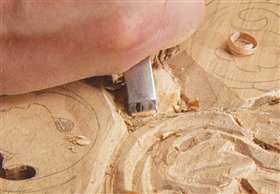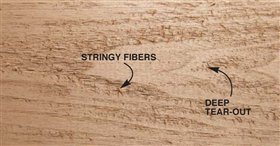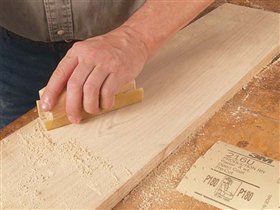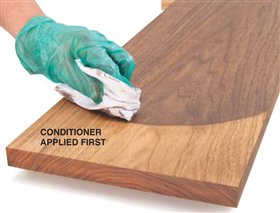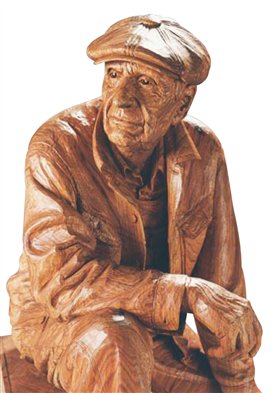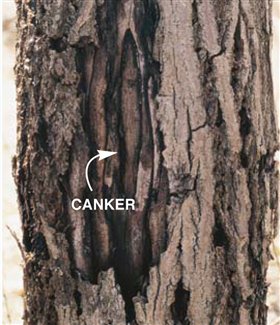|
Butternut is one of our prettiest domestic hardwoods,
but most people have never seen
it. Butternut trees are rare in urban and
suburban landscapes,and retail lumberyards
don’t usually stock it.
Even though furniture makers
and carvers have valued
it for centuries,
butternut lumber
has never been
commercially
important.
It’s easy to
mistake butternut
for another wood.
With a natural finish, it can look like oak, or
even birch. Stained brown, butternut is a dead ringer for black walnut.
Shaker cabinetmakers colored it with washes of blue, green, red and yellow.
Woodcarvers love butternut, but you’re more likely to admire their
handiwork than the wood from which it springs.
Butternut lumber is affordable, beautiful and enjoyable to work with,
and the trees are valuable members of our forests. Sadly, a deadly fungus
is ravaging them.Our generation may be the last with an opportunity to
get to know this great American hardwood.
Black walnut’s cousin
A member of the walnut family,butternut (Juglans cinerea) is often referred
to as “white walnut,”because of its light tan to cinnamon-colored heartwood
(Photo 1). Fresh-cut boards can have light and dark streaks,and pink,green
or gray hues.These tones disappear gradually over time,as do the dark-colored
pores.Antiques made of butternut have turned a uniform golden color.
Butternut’s plainsawn figure is nearly identical to black walnut’s,although
its “cathedrals”are more likely to be multi-spired (Photo 2). Butternut’s texture
is also similar to that of black walnut—more coarse than maple or
cherry,but finer than ash or oak.The pores are visible, just like they are in
black walnut.
Butternut grows from eastern Canada to Minnesota, through eastern
Nebraska and as far south as Arkansas,Alabama and Georgia. Typically, it’s
found growing widely scattered in mixed hardwood stands.
Buying butternut
Top-grade boards of 4/4 (1-in. thick) rough stock cost about $4 per
bd. ft.Typical boards are 6 to 8-ft. long and about 7-in.wide.You may
even find some really wide ones,over 12 inches.Wild-looking grain
is common in butternut.You’ll find knots and other defects too,even
in top-grade boards. Lower-grade No. 1 common boards cost
around $3 per bd. ft.The biggest commercial use of butternut is to
make paneling, using the lower grades.
If your local hardwood lumberyard doesn’t stock butternut, dig
a little deeper. Check the Yellow Pages or your local woodworker’s
group to find nearby sawmills and other small-scale lumber suppliers.
These operations are likely to handle a variety of locally-available
hardwoods. If you live within butternut’s native range,you might hit
the jackpot.You can also find butternut on the Web.A good place to
start is WoodFinder at www.wdfindr.com.
Working with butternut
Butternut is much softer than walnut and
not nearly as strong. It dents so easily you
can mark it with a fingernail (Photo 3). It
isn’t a good choice for a fine tabletop, but it’s
perfect if you want a distressed country look.
Butternut is also easy to move around.A
12-in.-wide, 10-ft.-long plank of kiln-dried
4/4 stock weighs only about 20 lb.A similarsize
walnut plank weighs well over 30 lb.
The best working characteristic of butternut
is the way it responds to hand-held edge
tools, as long as their cutting edges are kept
razor-sharp. It’s no secret why butternut was
popular with pioneer woodworkers. It cuts
easily,planes beautifully and carves like butter
(Photos 4 and 5). If you want to try handplaning,
a great place to start is with a straightgrained
piece of butternut.
Ironically,machine tools can bring out the
worst in butternut.This is one reason butternut
isn’t used commercially.Surface-planing
or edge-routing can tear the soft fibers from
the surface without warning, leaving it fuzzy
(Photo 6). The torn fibers are hard to deal
with.They’re so stringy,you can actually peel
them away from the surface, leaving unsightly
channels.Planing by hand with a razor-sharp
tool is the best way to remove them. It’s tough
to sand torn fibers smooth.They either crush
because they’re so soft,or tear because they’re
so stringy.
Sanding butternut
Butternut is so soft, it’s important not to go overboard when
you sand.Always use fine-grit sandpaper.Anything below 150
grit will tear the soft fibers. So will dull,worn-out grit.Don’t
sand a torn-out spot with finger pressure.You’ll just create a
divot. Instead, use a sanding block. Be careful when you use
a random-orbit sander.Use fine paper and go easy.
I prefer to sand butternut by hand,with a good old corkfaced
sanding block (Photo 7), starting with 180 grit.After
180, I go to 220 and finish off with 280 grit.
Finishing butternut
Shellac and butternut go together like a hand in a glove (lead
photo, page 90). If you’re stuck with some fuzziness that you
just can’t sand out, a wash coat of dewaxed shellac stiffens the
fuzzy fibers and gives you another chance to sand them
smooth before applying your finish coats.For a deeper amber
tone, or really troublesome fuzz, apply and sand down a second
wash coat.
Butternut stains like it sands—almost too well. If you don’t
have the surface sanded uniformly,or if you’ve got some fuzzy
spots,stains can look blotchy.I get the best-looking results when
I use a wood conditioner prior to staining (Photo 8).
|
|
Click any image to view a larger version.

1. Butternut looks like Black Walnut, only lighter. Genetic
cousins, their figure patterns are similar.

2. Fluted growth rings are characteristic.
They give plainsawn butternut its unusual twinspired
cathedral figure.

3. Butternut is too soft for a
tabletop, unless
you want to get a
distressed look
very quickly! Even
though it’s a
hardwood,
butternut is as soft
as white pine.

4. Butternut planes easily by hand, which
is one reason it
was favored by
19th-century
woodworkers.

5. Butternut is great for carving because
its end grain and
face grain are
equally hard. It cuts
easily and holds a
crisp edge.

6. Machining can cause stringy tear-out that’s difficult
to remove.

7. Use a sanding block to keep the surface level
when you sand. Sand with fine paper only and replace it
often.

8. Make butternut look like walnut with oil
stain. Stain alone will make it really dark, because the wood
is so porous. It’s best to start with a wood conditioner.

|



